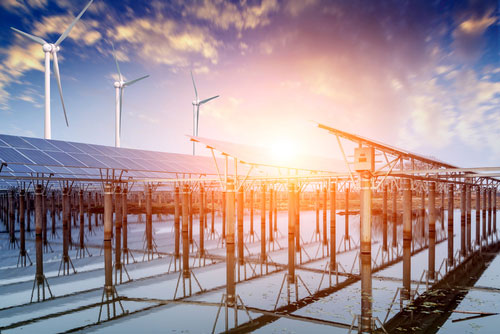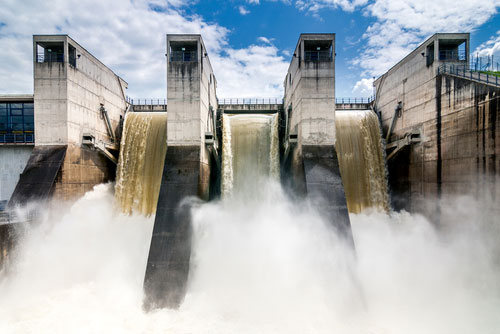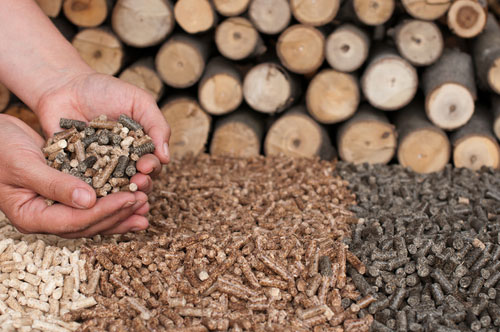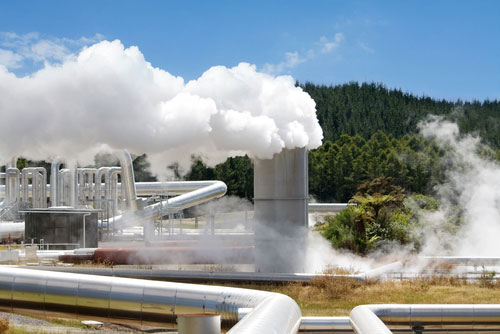what are the main means of transport ?
what is the rush hour ?
what happens during the rush hour ?
what is the main traffic problem ?
Hãy nhập câu hỏi của bạn vào đây, nếu là tài khoản VIP, bạn sẽ được ưu tiên trả lời.

Renewable energies (or renewables) are ways to generate energy from (theoreally) unlimited natural resources. These resources are either available with no time limit or replenish more quickly than the rate at which they are consumed.
Renewable energies are generally spoken of as opposed to fossil fuel energies. The fossil fuels’ stocks are limited and non-renewable in the human timescale. The most known examples of these resources are coal, oil or natural gas. On the contrary, renewable energies are produced from renewable sources. Here, we’re talking about energy coming from solar rays, wind or water cycles – all theoreally unlimited on a human scale time.
Renewable energies are also often referred to as “green energies” or “clean energies”. Still, this doesn’t mean that these energies aren’t harmful to the environment and have zero impact. Nonetheless, they have a low environmental impact compared to fossil fuels. That’s why they’re increasingly becoming important elements in companies’ CSR strategies in terms of sustainable development.
There are several types of renewable energies that are produced by different sources such as the sun, wind or water. In fact, these renewables’ power consumption has been growing over the last year. They have provided 8% of the world’s electricity in 2017 and they now cover 1/3 of the power mix in Europe. At the same time, the energy grid gets 1/4 of the total energy in China and 1/6 in the United States, India, and Japan. Let’s learn more about them below.
- Related content:
- Is Solar Energy Really Green And Sustainable?
1 – Solar Energy

This type of renewable energy comes directly from the capture of solar radiation. Here, the solar radiation is absorbed by specific sensors and rebroadcasted following 2 possible operation modes:
- Capturing sun rays and directly converting them into energy through photovoltaic solar panels;
- Capturing, collecting and turning the sunlight into heat that warms up water or air.
Examples of Solar Energy in the World
It’s estimated that in 2017 1,6% of the worldwide generated energy came from solar sources. At the same time, solar power also contributed to 20% of the total energy growth in this same year. Some of the most known sources of solar energy are:
- The Kurnool Ultra Solar Park in India. It has a total generation capacity of 1000MW and over 4 million solar panels installed;
- The Longyangxia Solar Park in China that has a total capacity of 850MW and covers around 25sq km.
- The Kamuthi Solar Facility in India: it has a total capacity of 648MV and covers 10sq km.
Is Solar Energy Renewable or Nonrenewable?
Solar energy is inexhaustible in the sense that it will cease once the solar system’s star – the sun – dies. However, many people wonder if, from a perspective of human’s being able to capture and use solar energy in the long-term, whether solar energy is renewable or nonrenewable.
[Full answer available soon.]
2 – Windpower, a Renewable Energy
Wind power is another renewable energy. Here, the wind’s kine energy makes turbines spin and creates a mechanical movement. Afterward, a generator transforms this mechanical energy into electricity. There are several types of wind renewable energies: onshore wind turbines, off-shore wind turbines and even floating wind turbines. But the operating principles are basically the same for all these types of wind-generated energy.
Examples of Wind Power in the World
Wind power continues has also been growing, In fact, it provided 4.4% of global power generation in 2017. The highest installed wind capacity belongs to China (164GW). At the same time, in the EU, wind power provides 15% or more of the energy generated in several countries such as Germany, Portugal or Lithuania. Some of the most known sources of wind power energy are:
- The Gansu Wind Farm in China. It is still under construction and it will be able to produce 20,000MV of power by 2020;
- The onshore Muppandal Wind Farm in India with a capacity of 1,500MW and over 3000 turbines;
- The Alta Wind Energy Center in the U.S. with a total capacity of 1,548MW that’s expected to reach 3,000MW by 2040;
- The Walney Extension in the UK. It has a total capacity of 659MW and it’s the world’s largest offshore farm.
3 – Hydro-Electric Power

Hydro-electric power consists in the transformation of the kine energy of the water (from rivers, dams, marine currents or tides) into mechanical energy by turbines.
- Related content:
- Marine energies: what is it?
- 5 promising marine energy projects
- The tidal energy: an example of the tidal turbine DCNS
Examples of hydro-electric power in the world
- The Sihwa Lake Tidal Power Station in South Korea. This is the world’s biggest tidal power installation and it has a capacity of 254 MW;
- The Rance Tidal Power Station in Brittany, France, has a 240 MW capacity;
- The Three Gorges Dam in China is the world’s largest power station in terms of installed capacity (22,500 MW).
4- Biomass

Biomass is made up of organic materials from plants or animals that contain stored energy. The combustion of these natural materials produces renewable energy. Some examples of generating energy from biomass are:
- Directly burning solid biomass garbage or wood to produce heat;
- Converting biomass into biogases such as methane or CO2 due to the bacterial activity that happens in the absence of oxygen (as is the case in landfills);
- Using sugar or corn crops to create biofuels such as bioethanol or biodiesel and mixing them with fossil fuels afterward. As a matter of fact, the world’s biofuels production increased by 3.5% in 2017.
Related content:
- Palm oil has a huge environmental impact. What’s the impact of its use as a biofuel?
- What Is Biogas Energy Production?
Examples of Biomass Energy in the World
Some of the most known biomass power plants in the world are:
- The Iron Bridge power station in the UK, with a capacity of 740MW. It uses wood pellets as the main fuel;
- The Alholmenskaft power station in Finland. It has a 260MW energy generation capacity;
- The Polaniec power plant in Poland that uses mainly agricultural by-products and wood residues. It has a 205MW capacity.
5- Geothermal Power as a Renewable Energy

The Earth generates and stores geothermal energy. In other words, radioactive materials decaying inside the Earth are emitting energy. Electricity can be created using directly or indirectly this energy, depending on the technology implemented. There are 3 main ways to use geothermal energy:
- Generating electricity directly from the Earth’s heat;
- Producing heat directly from hot water boiling on the planet’s surface;
- Using pumps over the shallow ground to heat (and also to cool)

The most common traffic problem in cities around the world is traffic jams. Sao Paulo in Brazil has the world’s worst daily traffic jams. According to reports, the historical congestion record was set on June 1, 2012, with 295 kilometres of vehicle queues around the city during the evening rush hour. Some other big cities also suffer from serious congestion in the rush hour.
The main cause of this traffic problem is the increase of the population in big cities. So the number of people using the roads has risen several times. The second reason is that the roads are narrow and sometimes are not good enough. Also, many road users have no respect for traffic rules. As a result, this problem is getting worse and worse.
1. What is the most popular traffic problem around the world?
…………………It is traffic jams……………………………………………………………………………………..
2. Does Sao Paulo in Brazil have the worst traffic jams?
………Yes, it does………………………..
3. When do big cities suffer from traffic jams?
………in rush hour………………………….
4. What is the main cause of the traffic problem?
………It is the increase of the population in big cities…………………………..
5. According to the passage, do many road users obey traffic rules?
………No, they don't………….
Vấn đề giao thông phổ biến nhất ở các thành phố trên thế giới là tắc đường. Sao Paulo ở Brazil có tình trạng tắc đường hàng ngày tồi tệ nhất thế giới. Theo báo cáo, kỷ lục tắc nghẽn lịch sử được thiết lập vào ngày 1 tháng 6 năm 2012, với 295 km phương tiện xếp hàng quanh thành phố trong giờ cao điểm buổi tối. Một số thành phố lớn khác cũng bị ùn tắc nghiêm trọng vào giờ cao điểm.
Nguyên nhân chính của vấn đề giao thông này là do sự gia tăng dân số ở các thành phố lớn. Vì vậy, số lượng người sử dụng các con đường đã tăng lên nhiều lần. Nguyên nhân thứ hai là đường hẹp và đôi khi không đủ tốt. Ngoài ra, nhiều người đi đường không tôn trọng luật lệ giao thông. Kết quả là, vấn đề này ngày càng trở nên tồi tệ hơn.

Bài tập 1
1. story/ about/ what's /the/?
2. kind/story/ what/ it / is/ of /?
3. main/who/ characters/ are/ it /in the/ ?
4. happens/ what/ story /in / the /?
Câu trả lời của tớ là
1. What’s the story about?
2. What kind of story is it?
3. Who are the main characters in it?
4. What happens in the story?

1. Because of knowing her family, I did what I could for her.
2. We made up our mind to set off early the next day to avoid the rush hour traffic.
make up one's mind to V = decide to V: quyết định làm gì
set off = depart: khởi hành, bắt đầu chuyến đi

1.I'm reading the story of Tam and Cam 2.It's fairy tale 3.My favorite book is The story of Mai An Tiem 4.The main character is Mai An Tiem 5.I think he is hard-working and strong 6.Yes,i do.Because this story is very interesting.ex2. 1.My name is.....2.It's student 3.I would like to be a teacher.Because i'd like to teach young children.5.i'd like to work with my colleagues.6.I would like to do my homework in my free time.7.I should study hard


I live in a big city and there is always busy traffic on the streets. About 6.30 every weekday people often travel to work or to school in a hurry by bicycles, motorbikes and cars, so there is always heavy traffic. The same situation happens at 5.30 p.m. when everybody gets home. As a result, there are often traffic jams at the busy crossroads or roundabouts during rush hours. Heavy traffic also causes air pollution and we are trying our best to use bicycles and buses more often to save the environment.
chúc bạn học tốt
I live in a big city and there is always busy traffic on the streets. About 6.30 every weekday people often travel to work or to school in a hurry by bicycles, motorbikes and cars, so there is always heavy traffic. The same situation happens at 5.30 p.m. when everybody gets home. As a result, there are often traffic jams at the busy crossroads or roundabouts during rush hours. Heavy traffic also causes air pollution and we are trying our best to use bicycles and buses more often to save the environment.
coi đc ko nha=)))